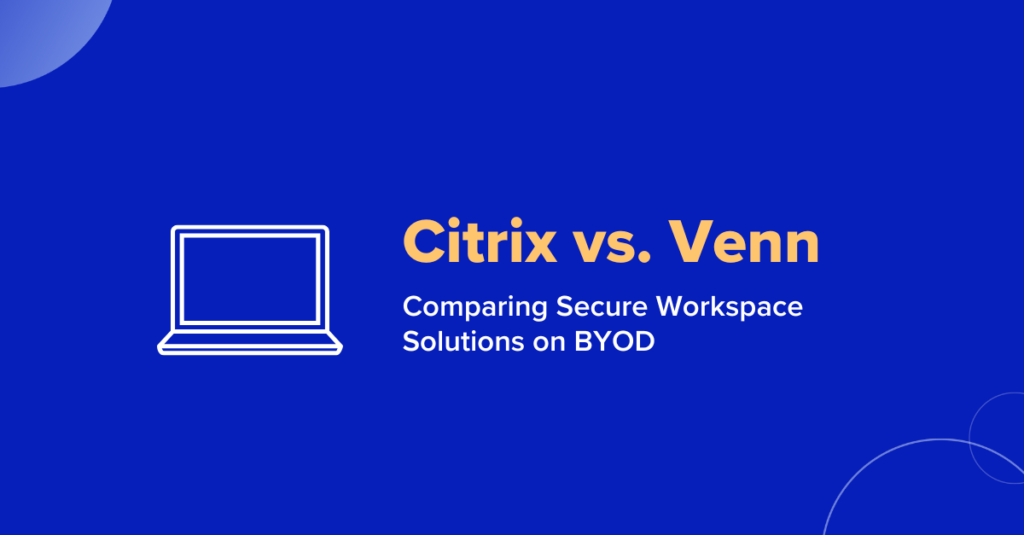Top Citrix Alternatives for BYOD Security

When it comes to securing remote and BYOD workforces, Citrix and other VDI platforms often come with high costs, complex infrastructure, and a frustrating user experience from lag and latency. For IT teams looking to protect company data without dealing with virtual desktop headaches, Venn is one of the Citrix alternatives that offers a simpler and smarter route.
Powered by Secure Enclave technology, Venn isolates and protects work data directly on any BYOD or unmanaged device, eliminating the need to remotely host a user’s desktop, while also delivering strong DLP policy enforcement, fast performance, and a seamless user experience.
Let’s unpack the differences between virtual desktops like Citrix, and Venn.
| Category | Venn | Virtual Desktops (VDI) |
|---|---|---|
| BYOD Support | Designed to support unmanaged devices by isolating work from personal activity | Often requires full device control |
| User Experience | Fast, local performance from natively installed apps | Lag and latency from apps being hosted remotely |
| Deployment | Quick to deploy, no additional infrastructure required | Requires complex backend setup and ongoing maintenance |
| Cost & Licensing | Lower total cost of ownership without needing infrastructure | High costs from infrastructure, licensing, and support |
| User Privacy | Only work apps and data are controlled; personal use stays private | Company has full control over user sessions and potentially the whole device |
Common Use Case: Securing BYOD Access for Contractors Without the Overhead of VDI
A company needs to quickly onboard 100 remote contractors who will be using their personal laptops for a project. With VDI, they’d face slow onboarding, high licensing costs, device shipping complexity, and frustrated users dealing with latency.
With Venn, one of the top Citrix alternatives, contractors can securely access work apps and data on their own devices – and all it takes is downloading Venn. Their administrator pushes out the apps they need to deploy and they are onboarded in minutes. IT teams maintain full control over business data while users enjoy fast, local access with devices they already know.
Ready to Ditch VDI?
Schedule your demo and discover how Venn delivers fast, secure access on any device, without the cost and complexity of virtual desktops.
FAQ’s
1. What is the best alternative to Citrix for securing personal devices?
Venn is a modern alternative to Citrix for securing work on BYOD and unmanaged devices. Unlike VDI, Venn uses Secure Enclave technology to protect work apps and data locally – without virtual desktops, slow performance, or complex infrastructure.
2. How can I secure company data on personal or unmanaged devices?
With Venn, company data is isolated and secured within a local secure enclave on the user’s BYOD device. This ensures sensitive data stays protected without managing or locking down the entire device.
3. Can Venn replace VDI for remote and contract workers?
Yes. Venn can reduce or entirely eliminate the need for VDI by providing secure local access to business apps and files on unmanaged devices. Venn is ideal for contractors, consultants, and remote employees.
4. What are the downsides of using VDI for BYOD?
VDI solutions like Citrix often require heavy infrastructure, are expensive to scale, and deliver poor user experiences due to latency.
More Blogs


